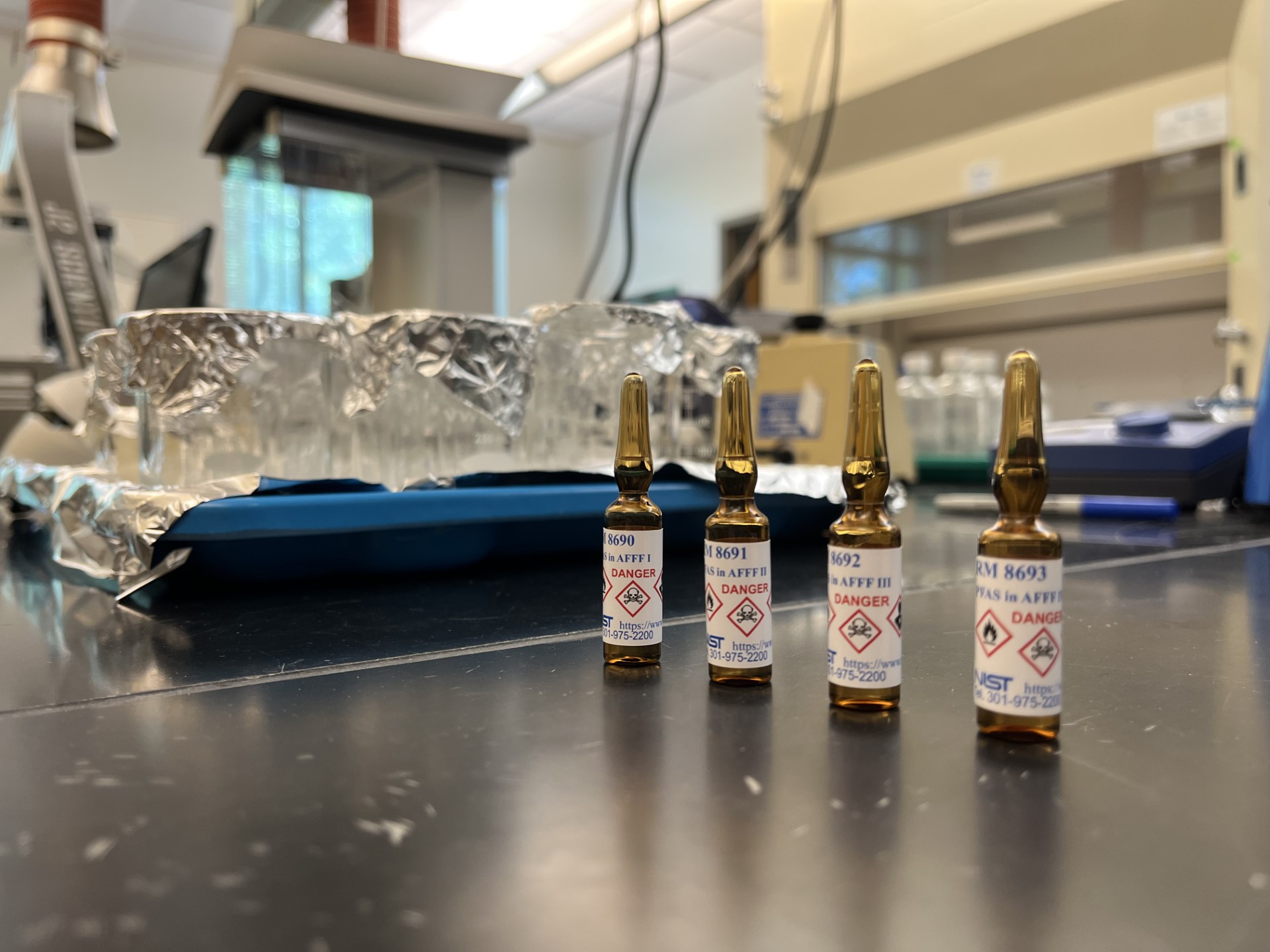
In movies, when we see fiery car crashes or flaming planes on runways, we know they are not real. But in the real world, fuel fires must be quenched with special kinds of chemicals, and the ones that have been most commonly used are known as aqueous film-forming foams (AFFFs). However, environmental and health concerns about AFFFs have launched widespread efforts to detect, monitor and eventually eliminate them. Now, researchers at the National Institute of Standards and Technology (NIST) have released new reference materials to expedite these efforts.
What makes the foams so effective are chemical compounds called per- and polyfluoroalkyl substances (PFAS), enabling them to suppress fuel fires much more quickly and efficiently compared with other alternatives. Unlike water dumped on a flame, which wouldn’t work in a scenario where a flammable liquid is causing the fire, the foams not only spread over the fire but prevent it from reigniting by suppressing oxygen flow and fuel vapors. AFFFs were first introduced in the 1940s and have been used since that time not only in emergencies but also in firefighter training exercises.
Due to their significant ability to resist heat and chemical changes, the PFAS in these foams break down slowly over time, giving them the name “forever chemicals.” The foams can easily leak into nearby water and soil and affect the surrounding ecology, raising concerns because PFAS have been linked to negative health effects such as certain cancers.
Because of these concerns, organizations including the Department of Defense (DOD) are starting to eliminate the use of PFAS-containing materials. Under the 2020 National Defense Authorization Act, the DOD will be required to stop purchasing AFFFs from manufacturers by October 2023 and will stop using them by October 2024.
To help with this phaseout, NIST researchers have collaborated with the DOD on a series of AFFF reference materials (RMs) containing PFAS. During the phaseout process, older AFFFs will still be around, and the RMs will help organizations identify foams with PFAS so they can remove them from use.
While manufacturers aim to meet the new military specifications for their foams to contain less than 1 parts per million (ppm) PFAS, “There are still legacy AFFFs sitting across the country, and they will need to have measurements made to show if they contain PFAS,” said NIST chemist Jessica Reiner. “If they do contain PFAS, then they will need to be disposed of properly.”
NIST has released four RMs containing different formulations of PFAS in the foams.
“These four RMs contain many of the different PFAS used in the legacy AFFFs that are being phased out. The RMs are useful for labs that want to test for these,” said Reiner.
The RMs will also help the military when purchasing alternative fire suppressants.
“Because the military has to stop purchasing these foams, they need to test for PFAS in the new foams that they buy. By having these RMs, they can measure for PFAS. Manufacturers producing new foams could also use the RM when they need to test if they are PFAS free,” said Reiner.
NIST researchers sent the RMs to a number of other labs to be tested in what’s called an interlaboratory study. They learned scientists had a hard time measuring PFAS in foam form. NIST researchers then designed the new reference materials in a specific way so that each individual formulation is diluted to make it easier to use.
Analytical labs, academic institutions, and the U.S. Department of Transportation are a few other examples of groups that can use the RMs. “For example, anyone in a toxicology group could use these RMs for scientific experiments, such as delivering doses of the compounds to study their effects on cells,” said Reiner.
RM 8690 PFAS in AFFF I, RM 8691 PFAS in AFFF II, RM 8692 PFAS in AFFF III, and RM 8693 PFAS in AFFF IV are available from NIST. Organizations wishing to purchase the reference materials can visit the NIST Store.

